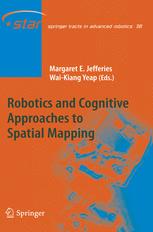

Most ebook files are in PDF format, so you can easily read them using various software such as Foxit Reader or directly on the Google Chrome browser.
Some ebook files are released by publishers in other formats such as .awz, .mobi, .epub, .fb2, etc. You may need to install specific software to read these formats on mobile/PC, such as Calibre.
Please read the tutorial at this link: https://ebookbell.com/faq
We offer FREE conversion to the popular formats you request; however, this may take some time. Therefore, right after payment, please email us, and we will try to provide the service as quickly as possible.
For some exceptional file formats or broken links (if any), please refrain from opening any disputes. Instead, email us first, and we will try to assist within a maximum of 6 hours.
EbookBell Team

4.0
86 reviewsThis book brings together the fields of robot spatial mapping and cognitive spatial mapping, which share some common core problems. One would reasonably expect some cross-fertilisations of research between the two areas to have occurred, and this has happened but only recently. There are signs that both fields have matured and that efforts to cross-fertilise are happening, but it is neither complete nor common yet.
Robot spatial mapping, in this book, is about the problem of a robot computing a representation of its environment from data gathered by its sensors. This problem has been studied since the creation of the first autonomous mobile robot in the late nineteen-sixties. People and animals also compute a representation of their environment, which is commonly referred to as a cognitive map. Cognitive spatial mapping is about the problem of computing a cognitive map, and has been studied extensively by many researchers of disparate backgrounds.
The book consists of three parts: Robot Mapping, Cognitive Mapping, and Cognitive Robot Mapping. The first part addresses a cross section of problems commonly found in robot mapping, such as uncertainty, localization, unstructured environments, and control architectures. It includes a comprehensive introduction to the famous SLAM problem. Part two presents works on cognitive mapping and discusses how the findings could benefit researchers interested in robot mapping. Spatial cognition is examined based on behaviour of humans and animals, and how spatial information is encoded in the brain. The third part presents implementations of cognitive mapping theories on mobile robots. It includes computational models of cognitive maps, such as hybrid metric-topological ones, absolute space representations, and biomimetic approaches.